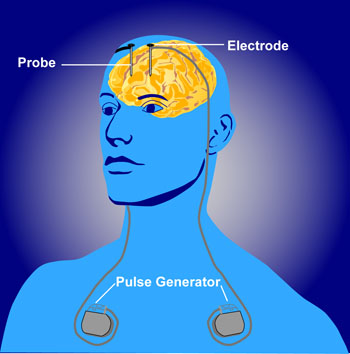Part 2 of 4
How is Parkinson’s Disease Treated?
This is People and Parkinson’s – Part 2 where I will be talking about how Parkinson’s is treated.
There are a number of different prescription drugs which, of course, will have side effects. I list below examples of some of these drugs and their given side effects.
Carbidopa/ Levodopa (Sinemet®) which was developed in the 1960s and was considered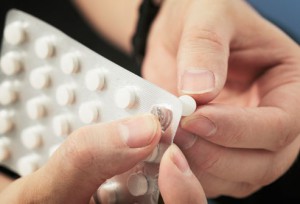 to be a real breakthrough. Levodopa on it’s own will cause vomiting and nausea so the addition of carbidopa is given to stop this problem.
to be a real breakthrough. Levodopa on it’s own will cause vomiting and nausea so the addition of carbidopa is given to stop this problem.
Side Effects: Nausea, vomiting, falling blood pressure upon standing, worsening of glaucoma, hallucination, psychosis, low blood pressure, confusion, dyskinesia, dry mouth, dizziness
Dopamine agonist Bromocriptine (Parlodel®) which mimics the dopamine necessary in the brain.
Side Effects: Low blood pressure, nausea, edema, confusion, dry mouth, depression, headaches.
Anticholinergics Benzotropine mesylate (Cogentin®) can be used to reduce tremor.
Side Effects: Confusion, hallucinations, nausea, blurred vision, dry mouth, urinary retention, nervousness; not used long-term due to side effects.
MAO-B inhibitors Selegiline (Eldepryl®, Carbex®) which block an enzyme in the brain that breaks down levodopa.
Side Effects: Agitation, insomnia, hallucinations.
COMT inhibitors Entacapone (Comtan®) used to prolong the effect of levodopa by blocking its metabolism.
Side Effects: Abdominal pain, back pain, constipation, nausea, diarrhoea, blood in urine.
Other medications such as Amantadine (Symmetrel®) is prescribed to help tremor and reduce dyskinesias that occurs with dopamine medication.
Side Effects: Dizziness, weakness, dry mouth, constipation, skin blotches
By the way, Dyskinesia is a distortion of a voluntary movement, like a slow tic, which can be a side effect of taking levodopa and/or antipsychotic drugs.
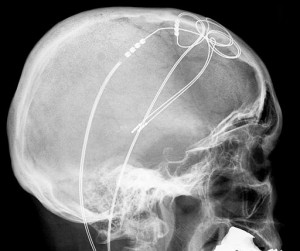 Are there any surgical treatments?
Are there any surgical treatments?
Yes there are. Surgery for Parkinson’s Disease (PD) was first developed over 50 years ago. This has evolved into a version which was developed in the 1990s and is now a standard treatment for many sufferers of PD. It is known as Deep Brain Stimulation (DBS) and many people have been treated worldwide with much success. It is not a cure but more a relieving kind of treatment and is especially useful for those who experience disabling tremors, prescription drug induced dyskinesia and wearing-off spells (‘Wearing-off’ is a complication that often occurs after prolonged treatment using levodopa where symptoms of PD start to return or worsen before the next dose of levodopa is due).
What exactly is deep brain stimulation?
Using MRI and neurophysiological mapping, electrodes are inserted into a targeted region of the brain. An impulse generator device or IPG, which is a similar unit to a pace maker, is implanted under the collarbone. This provides electrical impulses to the area of the brain which involves motor function. The patient is then given a controller which allows them to turn the device on and off and check the batteries. The batteries that come with the unit usually last for a minimum of 3 years and up to 5 years. When they need replacing, the relatively simple procedure is done under local anesthesic.
Would this procedure benefit me?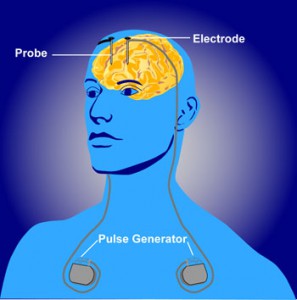
This procedure will not be beneficial to everyone but for those that suffer greatly from disabling tremors, medication induced dyskinesea and bouts of wearing off, it can be a dramatic improvement for them.
Deep brain stimulation will not cure Parkinson’s, nor will it slow down its progression and as with all surgery, there is a small risk of infection and other uncertainties such as stroke and bleeding. A small percentage of sufferers have experienced a decline in cognitive processes after this surgery. Even so, many think it is worth the small risk for some relief from the more debilitating symptoms of this disease and a dramatic improvement in their quality of life has often been the outcome of this surgery. Benefits can last for at least 5 years.
Being well informed about the possible risks and the likely outcome according to the symptoms the patient has, is a must before they consider proceeding with this treatment.
Other Therapies and Parkinson’s Management
We have yet to explore management of PD by way of various therapautic methods.
Advice and support is provided by trained therapists who can recommend exercises and various different treatments to suit the patients needs at the different stages that they will encounter as they go through life with PD.
Occupational therapists are health professionals who will help PD patients to maintain their independence for as long as possible and keep up with their hobbies and activities that are important to them. They will give help and advice on how to do everyday tasks and keep up their life skills. Speech therapists dealing with communications skills will help with speech, body language and any swallowing problems and give advice on communication aids.
Physiotherapists will concentrate on keeping the body supple and mobile and also give advice to the carer to make sure he/she keeps in good health.
Treatments such as massage therapy, aromatherapy and acupuncture are found to be especially useful to sufferers. It can help them to relax and ‘chill out’ according to patients. These complementary therapies are extremely important and do help to increase moral of PD sufferers.
Last, but definitely not least is diet. This is where a registered dietitian or naturopath can be extremely helpful in easing the symptoms of PD by way of diet and supplementation.
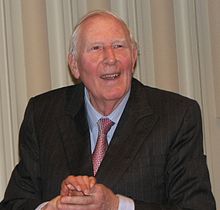 More famous people and Parkinson’s
More famous people and Parkinson’s
Sir Roger Bannister was the first man to run a mile in less than four minutes, 59.4 seconds was the exact time. He made sporting history with his landmark run at Oxford’s Iffley Road track on 6th May 1954. Later when found to be suffering from PD, he said “I am have troubles with walking. Ironically, it’s a neurological disorder – Parkinson’s disease.” The irony? Sir Roger Bannister’s profession was that of a neurologist! He was diagnosed with the condition in 2011.

Who could forget the famous boxer Muhammad Ali formerly known as Cassius Clay. He was arguably considered the best heavyweight boxer of the century. He was diagnosed with Parkinson’s in 1984. The disease is thought to be more prevalent in cases of head trauma or from activities such as boxing.

In Part 3 of this post, to be published on the 8th Januay, we will be looking at other considerations and implications of PD and what the future holds.
Please don’t hesitate to comment below and let me know your thoughts and experiences with PD. Your imput can often help people and their carers and loved ones, who are living with this disease. Ches Power
Spread the word!
